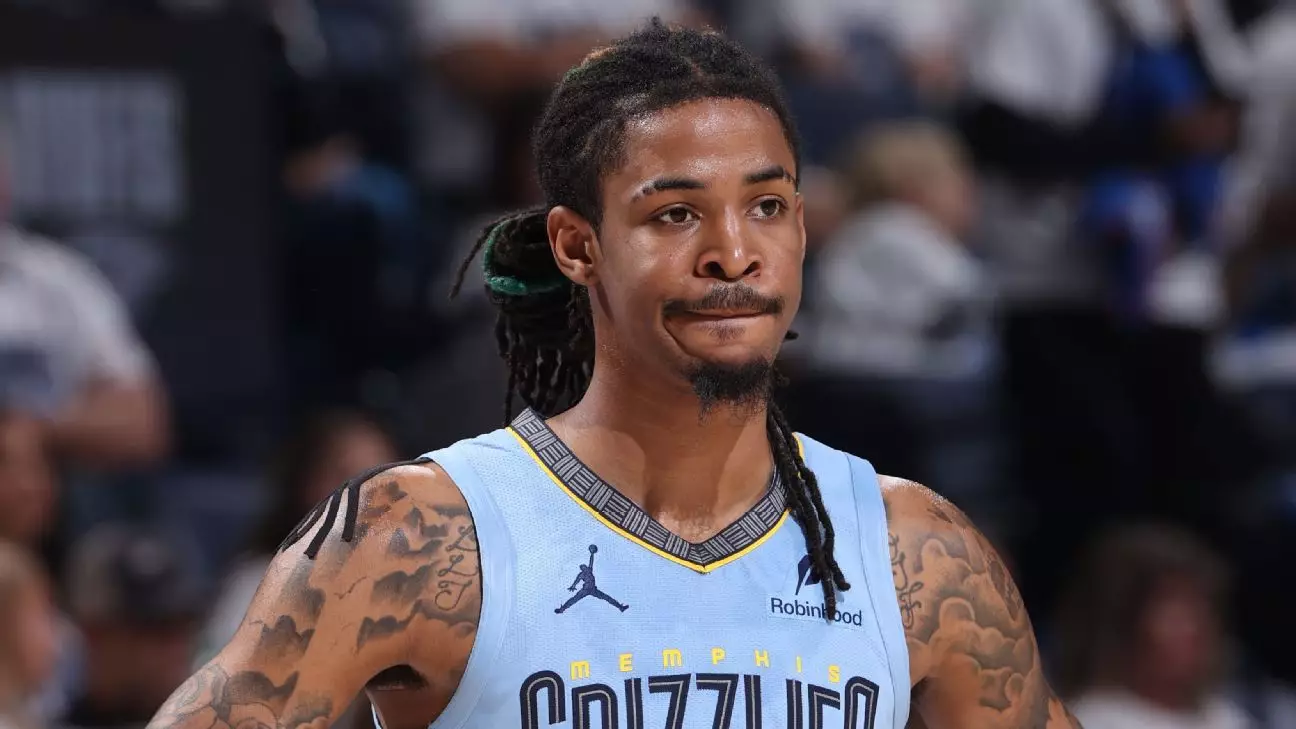In the realm of sports, incidents off the court can sometimes overshadow an athlete’s accomplishments on the court. Such was the case when Memphis Grizzlies two-time All-Star Ja Morant found himself embroiled in a legal dispute following an alleged altercation with teenager Joshua Holloway during a pickup basketball game at Morant’s parents’ home. This encounter seemed to symbolize more than just a physical confrontation; it became a flashpoint revealing the challenging intersection of celebrity culture, legal accountability, and the responsibilities that come with fame.
Holloway, a Samford University basketball player who was 17 at the time of the incident, claimed that Morant punched him during a game in July 2022. This claim raises a multitude of questions about the nature of aggression in sports and the consequences that ensue when personal interactions devolve into violence. At its core, this altercation was ignited by a seemingly harmless moment—an aggressive basketball pass launched by Holloway during a “check-ball” situation, a standard practice in pickup basketball games designed to determine readiness before play resumes.
The Legal Landscape: Self-Defense vs. Aggression
The ruling delivered by Shelby County Circuit Judge Carol Chumney holds substantial implications for both parties involved. The judge dismissed Holloway’s lawsuit, reinforcing Morant’s claim of self-defense while establishing an intriguing precedent regarding civil immunity in Tennessee. Under Tennessee’s “stand your ground” law, Morant was afforded the opportunity to assert that, in feeling threatened by Holloway’s actions, he acted within his rights to defend himself. This legal doctrine has stirred significant debate, particularly when applied in contexts where physical confrontations, like those often associated with sports, occur.
From one perspective, the “stand your ground” law serves to protect individuals from undue harm. However, when such legislation is invoked in civil suits, it raises uncomfortable questions about accountability—especially when a public figure is involved. Morant’s defense suggests that his celebrity status granted him not just a platform for excellence in sport but also a shield against legal repercussions, creating a disheartening dynamic where athletes might evade accountability due to privilege.
Contrasting Narratives: Perspectives from the Courtroom
The courtroom drama unfolded with starkly contrasting narratives. During hearings, Morant testified that he felt genuinely threatened after Holloway hit him with the basketball, claiming that he reacted instinctively. On the other hand, Holloway maintained that Morant was the aggressor, asserting that the punch he received was unwarranted and disproportionate to the situation. Notably, the courtroom also heard from former NBA player Mike Miller, who corroborated Morant’s version of events, insinuating that Holloway’s actions initiated the escalation of tension.
This disparity in testimonies poses significant complexities in understanding the dynamics of aggression in sports settings. When two individuals, each prominent in basketball, take on roles as adversaries in a legal conflict, the gravity of their incident transcends personal disputes—it invites scrutiny into how athletes handle conflict, particularly as role models for younger generations. Morant and Holloway are not just athletes; they are figures wielding social influence, making it imperative for them to exemplify resilience and responsibility in their actions.
Lessons in Leadership: The Courtroom and Beyond
Beyond the verdict, Judge Chumney’s ruling evokes a larger theme: the importance of leaders in any capacity. She emphasized that both Morant and Holloway, as rising stars in basketball, have a unique platform to inspire youth. This thought transcends their incident; it speaks to how athletes can navigate pressures within their profession and the expectations placed upon them by society.
The urge to lead by example is crucial, especially in a world where social media amplifies every action, often leading to public scrutiny. The ripple effects of their choices extend far beyond the court—what occurs within pickup games can demonstrate sportsmanship or provoke violence, thus shaping the perspectives of aspiring athletes. As Morant and Holloway emerge from this battle, the onus is on them to leverage their influence positively, redirecting the narrative from conflict toward camaraderie.
In the end, the dismissal of the lawsuit may grant legal closure, but the real task lies in fostering a culture of respect and accountability within sports—one that holds athletes to high ethical standards regardless of their celebrity status. There’s an opportunity for growth; the question is whether those involved will seize it.

